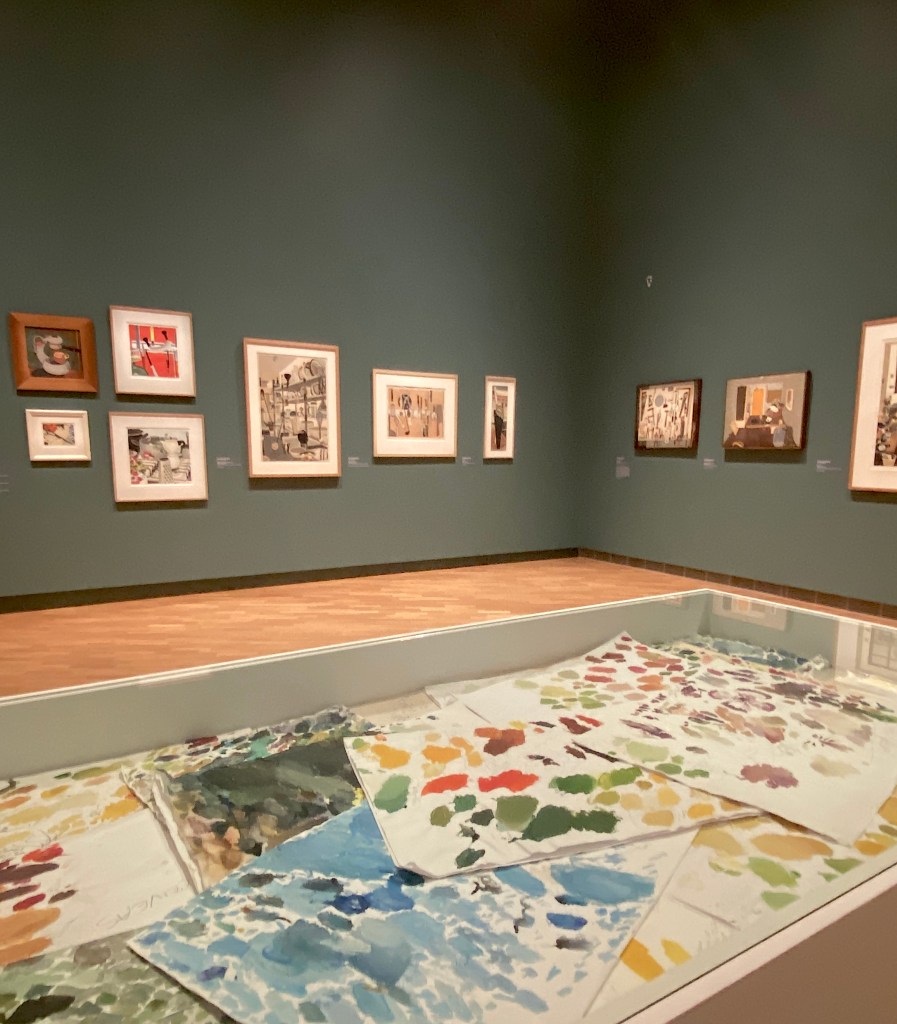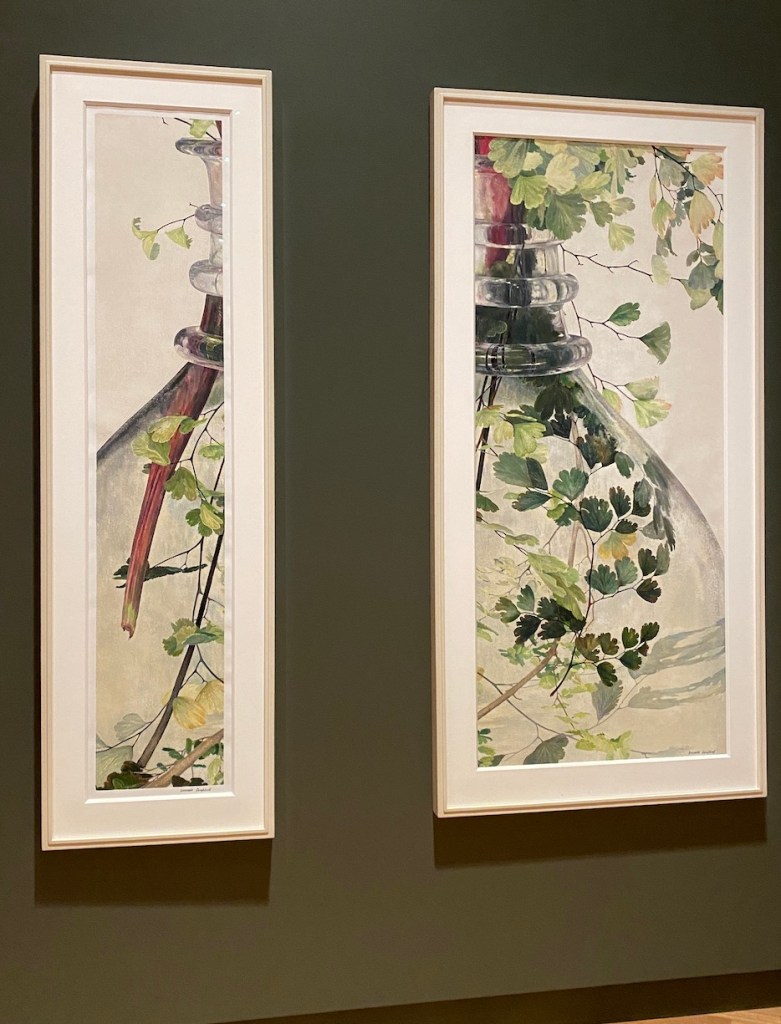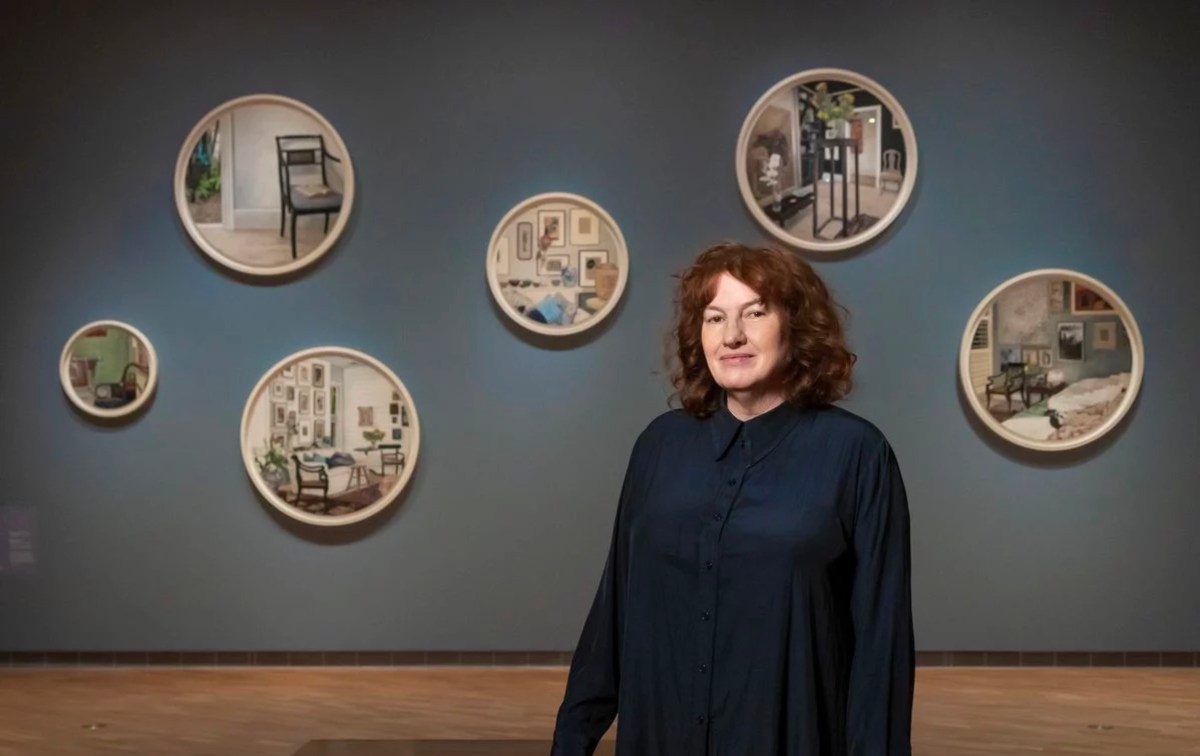Some artists’ work moves in and out of fashion. Others are just constant. Cressida Campbell is one of those artists who has enjoyed incredible commercial success over her 40-year career.
For some, that might mean of flick of a wrist in dismissal – caught up in misdirected perceptions. What the National Gallery of Australia’s (NGA) survey exhibition of Campbell’s work does, is shift the conversation.
Everything about this exhibition points to a bold and brave career, one that warrants attention far more than commercialism, beauty and home ‘decoration’.
This is testament by the choice of Cressida Campbell to be the first summer major exhibition – aka blockbuster – given over to an Australian woman artist in the history of the institution.
While terms like ‘first’, ‘exclusive to’ and ‘blockbusters’ are more about marketing than what is on the walls, in this case it is an important tag to drive. Campbell is one of only a handful (literally), of major solo exhibitions by women artists more generally in that 40-year history of the NGA.
In early 2019, the National Gallery, in collaboration with the Countess Report, researched its collection data and found that only 25 per cent of the Australian art collection and only 33 per cent of the Aboriginal and Torres Strait Islander art collection was work by women artists.
This imbalance was also reflected in acquisition data: of all works acquired by the National Gallery between 2014 and 2018, only 27 per cent of works were by women artists.
The gallery has very publicly been addressing that imbalance through the Know My Name project – and in March this year, the launched its first Gender Equity Plan. It has also been rigorously acquiring the work of female artists, including a major work by Campbell created for this exhibition.
Why this exhibition is important
Whether you are a champion of gender conversations, or simply an advocate for greater gravitas for all Aussie artists in our museums – this exhibition holds its own, no platforms needed.

Hung thematically (Plants, Studio – with a vitrine full of colour studies, Bushland and Waterways), viewers walk directly into what Campbell is best known for – her still lifes – and are greeted by the quote by the artist: ‘Degas said, “Never paint anything you don’t love”, which I thought was an interesting and fascinating tip. It doesn’t have to be beautiful in any way, but it has to be something that you love to examine.’
This exhibition is a lesson in examination, and taps into a whole ‘slow movement’ which has pushed back against our increasingly hectic lives. It also has a synchronicity with our collective zeitgeist, with a new sense of our domestic spheres thanks to the recent pandemic.
In this first gallery, on an end wall, is a zip spliced from a window sill scene from Campbell’s kitchen – and like all her works, simply titled, The kitchen shelf (2009). It has been blown up to steroid-proportions in the entrance to the exhibition – teaching one to hone how they look, and to find beauty in simple details. It is played off with a free ‘drop in and draw’ area which is a delightful addition.
The format of this painting is often repeated across her career – from views of Newcastle in the late 1980s to zips of everyday harbour scenes in Sydney.
In the catalogue, Carol Cains likens the format to Japanese folding screens (byobu) and illustrated hand scrolls (emaki) as well as a cinematic frame. Campbell’s first husband, the late Peter Crayford was a film critic so it is understandable that there is a comfortability with this way of reading a scene.
But they are so much more. They also remind me of early colonial works by artists such as Charles Condor and Arthur Streeton who favoured this format, and point to Campbell’s place within a lineage of Australian art history.
Moving through this expansive show of 140 works, the galleries are painted with subtle nuances of green and blue, which allow the works to pop forward off the walls, but without the kind of garish colour-swatching that brand many major shows.
What this exhibition does is jostle the viewer between a kind of sublime state of pure enjoyment, to setting them alive with a rigor and curiosity for Campbell’s unique technique, visibly witness to her obsessive drawing, carving, surfacing to create these works that sit somewhere between painting and printmaking.
One starts to get a sense of her tenacity to work and rework, to push and extend, the splice and edit – all the while incising the panel like a shallow woodblock and then working back into ‘the plate’ as a painting.

A good example of that bold drive of Campbell’s is the re-joining of a work in the exhibition, that was edited into two and sold separately to different collectors: Glass carafe with maidenhair and pink stem (2016-17) and Maidenhair and carafe (2016).
It is a great lesson in composition for any artist, and permission to trust your instincts.
If there was ever any doubt that Campbell was little more than a ‘pretty picture painter’, there are two incredible works in this exhibition that strip that carpet from under one. The small work Lichen (2016-17), a kind of frilly abstraction of mottled forms and colours, and The Pool (2018) – the piece viewers end with in this exhibition.
Its watery band reflections edits out the trees that form them; that inky pool a mind-boggling technical feat to pull off using this woodblock printing technique.
A career marked by an acquisition
What makes this exhibition so enjoyable for many is its extraordinary ‘everydayness’ – it is a lived experience like falling into a slightly saggy old armchair, a woft of flowers from the garden or an overripe persimmon titillating the senses.
This is no better understood than in a new work acquired to mark the Gallery’s 40th anniversary, Bedroom nocturne 2022, a suite of circular or tondo composition.
While Campbell has been experimenting with this format since 2018, she has worked slowly and repeatedly before this opus. While it might feel like a radical shift, like those long zips, the subject remains constant, always turning to an inner reading of the things around her.
Collectively they offer an intimate night-time view of the bedroom she shares with her husband, Warren Macris – which takes on an extra resonance with its shadows and intimacy of crumpled sheets, given that Campbell has suffered illness since late 2020.
Curator of the survey exhibition, Dr Sarina Noordhuis-Fairfax, said of this new work: ‘The mood of this woodblock painting is a marked departure from her other more measured domestic scenes’ as it almost turns in on itself with an introspection.
The gallery concluded that Campbell’s four-decade career demonstrates her ability to blur the boundary between art and life as she translates the everyday into the extraordinary.
Cressida Campbell
National Gallery of Australia
Curated by Dr Sarina Noordhuis-Fairfax
24 Sep 2022 – 19 Feb 2023
Ticketed $6 – $22





